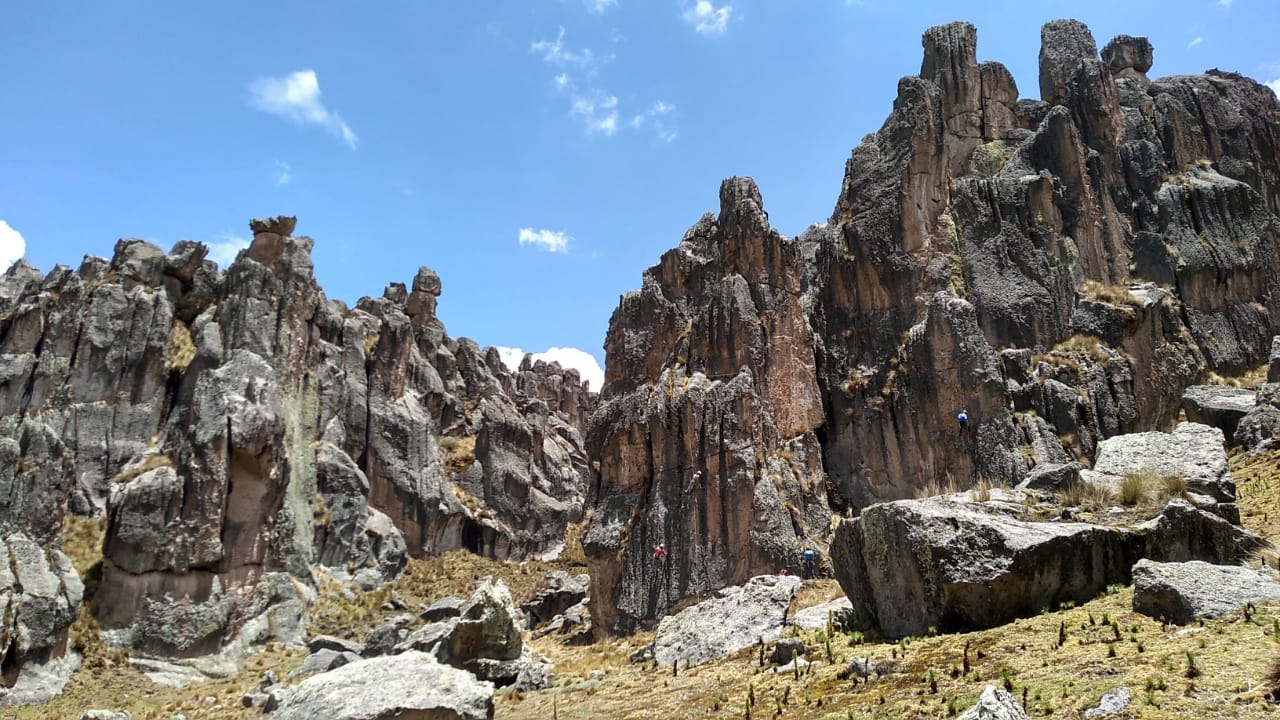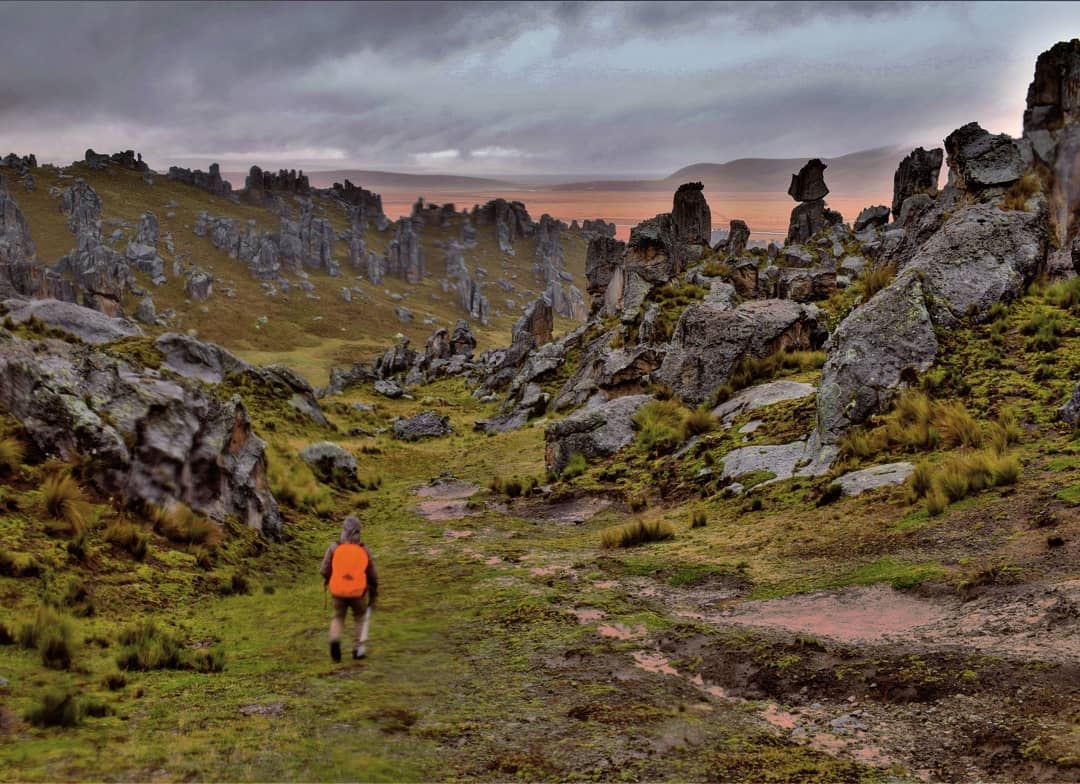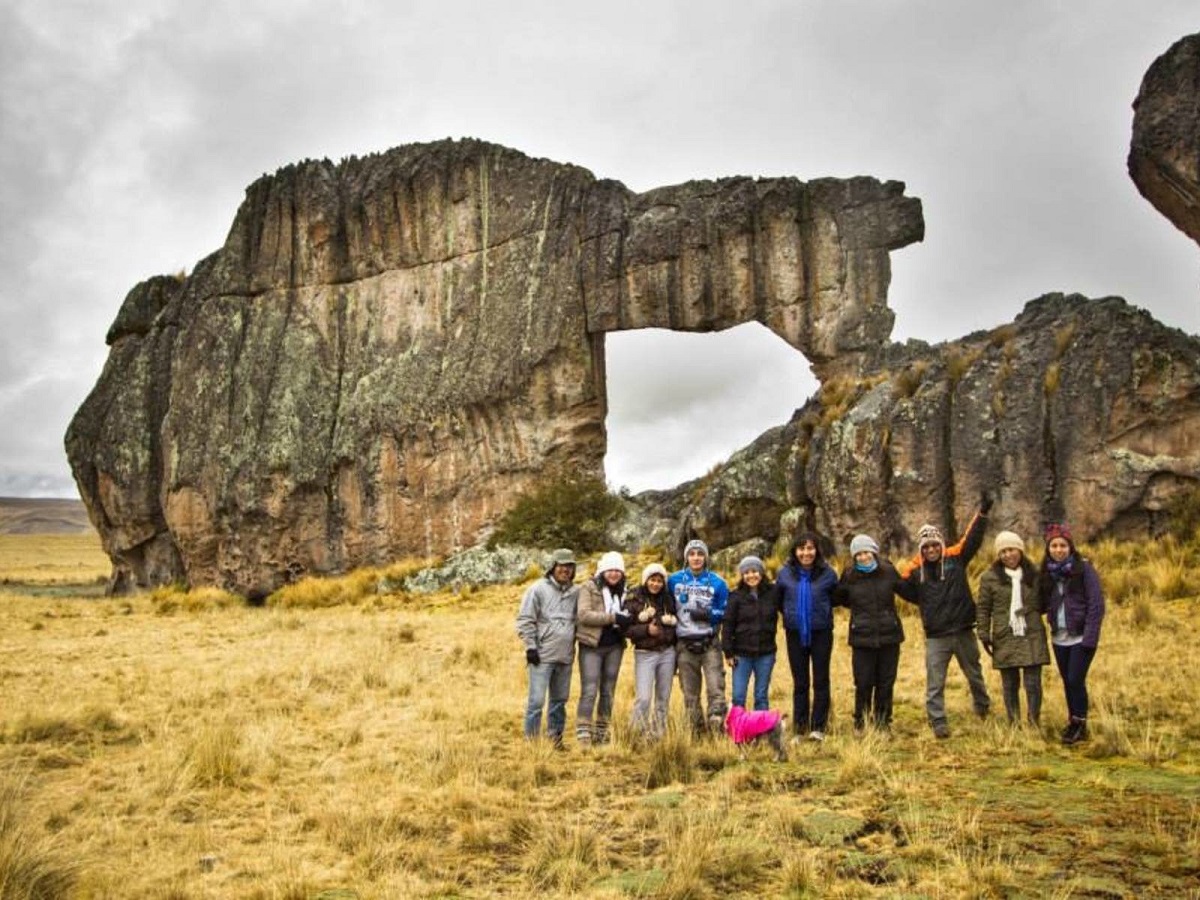Pasco hides a true wonder: the Huayllay National Sanctuary, located 43 km south of Cerro de Pasco, at more than 4 thousand meters of altitude. The melting of the glaciers and the volcanic activity of millions of years have created impressive rock formations, with unique and fascinating figures. If you are a lover of adventure, nature and the spectacular landscapes of the Peruvian highlands, this is the perfect destination for you. We bring you four interesting facts about this beautiful stone forest, considered one of the 7 wonders of Peru.
Location:
The Huayllay stone forest is located 40 kilometers from the province of Pasco, 8 hours from Lima and an hour and a half from the Huayllay district; on the Bombón plateau.
Altitude:
It has an altitude that goes from 4100 to 4546 m.a.s.l.
The legend of the Stone Forest of Huayllay in Pasco
Legend has it that a huayeyna had 2 shepherd children who went out to work every day.
One day they disappeared and the worried mother went to look for them in the forest.
She asked the condor who replied that she had not seen them, she asked the nuns who said that they had seen them pass by and that they did not know which way to go. She also consulted the alpaca and told him that the Japurin lagoon had eaten them.
She desperately went to that lagoon and shouted from the rooftops: where are my children! have you eaten them?
The lagoon replied: «I have punished them because they threw stones at me and disturbed my waters».
Give them back to me, her mother asserted. The lagoon asked for her soul in exchange for her children.
At such a request, her progenitor gave her soul for her love, but this lagoon deceived her and turned her into a rock.
Since then, in front of capulí there is a stone in the shape of a woman.
In thousands and thousands of years, the lagoon managed to deceive the bear, the snail, the cobra, the elephant, the iguana. We can see all these beings today in the National Sanctuary of Huayllay.
According to testimonies of the people who enter the stone forest, this place does not have an established exit. It is an area that has only one entrance and inside is a labyrinth of stones.
For that reason, self-entry is prohibited and should only be done under the supervision of a qualified guide.

What is the objective of the Huayllay National Sanctuary?
Protect the geological formations of the Huayllay Stone Forest, as well as its native flora and fauna.
How was the Huayllay Stone Forest formed?
This forest arose millions of years ago as a result of deglaciation and volcanic eruptions, it is said that this was a seabed with capricious rock shapes and in the caves we can see cave paintings.
Geological Formation:
Lithologically, the Huayllay National Sanctuary is made up of 90% volcanic rocks (fetid or volcanic ashes) and is whitish in color, the remaining 10% is made up of rocks of sedimentary origin such as limestone, sandstone and shale found at the base of the tuffs. The volcanic material of the rock forest corresponds to pyroclastic flows, which probably originated in a volcanic center that would be located to the west of Huayllay (on the Pariamachay hill, approximately 15 km); however, a volcanic caldera morphology is presumed, 20 km southwest of Huayllay, around which there are hot springs.

What to see in Huayllay National Sanctuary?
The main attraction is the shape of animals that have several of the rocks in place of different sizes.
The area also has numerous archaeological remains, such as cave paintings scattered throughout the area, which number more than 500 and show an ancient relationship between man and this unique ecosystem. Several beautiful lagoons and hot springs enrich the landscape.
In an extension of 6,815 hectares, the Huayllay Stone Forest is home to more than 480 rock figures of great beauty and uniqueness, formed by ancient volcanic chimneys shaped by the erosion of wind, water and the melting of glaciers.
The fauna has also adapted to this unique ecosystem. When you visit it, you will find wild guinea pigs, deer, vizcachas, skunks, Andean foxes, llamas, alpacas, guanacos, vicuñas, wild cats and different species of rodents.
What to do in the Stone Forest of Huayllay?
You can do sports such as climbing on the huge rocks or cycling.
In the southern area of the sanctuary are the ruins of the colonial mining complex of San Carlos de in the southern area, which was a prosperous metal foundry that, due to its construction finishes and its harmonious walls, seems to have been a very important site. , with different venues, place of residence, work area.
You cannot miss the thermo-medicinal baths of La Calera, with pools of different temperatures, it is said that this place was the site of the Inca baths.
You can also sleep in the stone Bungalows in Cancha Cucho.
Along this same path is the route that takes you to the Yanacocha lagoon, where the remains of a mummy from hundreds of years ago were found.
Adventures in Huayllay
The Huayllay Stone Forest has become one of the favorite places for adrenaline lovers. Mountain bikers, for example, travel a route that goes from 4,100 meters above sea level to 4,500 meters above sea level, which represents a challenge. The stone forest is also perfect for other extreme sports such as rock climbing and trekking. Its privileged location, contact with nature and the challenging nature of the route ensure that adventurers have a unique experience.
Cave paintings in the Stone Forest of Huayllay
This national sanctuary keeps testimonies of the passage of man for 10,000 years. The evidence is the presence of more than 500 cave paintings throughout the forest, belonging to different moments in the history of ancient Peruvians. The vast majority of the paintings are related to the domestication of Andean camelids. Thanks to them, archaeologists have been able to determine that, in the area, the domestication of llamas and alpacas would have begun around 6,000 years BC, but their incorporation as pack animals would date back to 4,500 BC.

What routes exist in Huayllay?
Currently, the Sernanp, in charge of the care and maintenance of the Sanctuary, manages three main tourist routes:
Route 1. The tour takes an average of approximately two hours and you can see the following figures: the king's crown, the tunnel, the bear's prayer, the fish, the thinker, the dog, the snail, the turtle, the witch, the lizard, the red-handed lizard, the seal, the lamb, the nuns, the kiss of the bride and groom and the cobra.
Route 2. There are two options: by car, the journey takes about an hour and a half; on foot, between 3 and 4 hours. You will be able to observe cave paintings and the figures of the angel, the elephant, the alpaca, the tourist, the mushroom, the condor, the toad and the porch.
Route 3. The tour takes approximately 3 hours on foot. You can see the figures of the greeting, the child, the falcon, the face, the Roman and the dinosaur, as well as cave paintings.
Business hours
Every day from 8:30 a.m. to 5:00 p.m. to 5 p.m.
Climate and Temperature
The area has a sub-humid and semi-frigid climate. The average annual temperature is 6°C. The rainy season is between September and March. Due to the rocks that store heat, they also generate the existence of several microclimates.
Best Trekking and Tours in Peru
Many are the routes that take you to Machu Picchu, but none is like the Inca Trail tours, the most famous pedestrian path in the Americas. After flying from the capital of Peru, Lima, you will arrive in Cusco to walk for four days along a path through forests and dense fog, millenary stone steps and discovering the ruins of ancient fortifications and Inca cities, and all the time enjoying majestic views.
- Sacred Valley Bike Tour
- Honeymoon in Machu Picchu
- 1 Day Inca Trail Hike to Machu Picchu
- Sacred Valley Tours
- Lares Trek to Machu Picchu 4 Days
- Huchuy Qosqo Trek to Machu Picchu
- Short 2 Day Inca Trail Hike to Machu Picchu
- 2 Day Inca Trail with Camping
- Apu Ausangate Trek 7 days
- 4 Day Jungle Trek to Machu Picchu
- Inca Quarry Trail to Machu Picchu
- Urubamba River Rafting
- 5 Days Salkantay Mountain Trek
- 3 Days Salkantay Trek to Machu Picchu
- Huchuy Qosqo Trek to Machu Picchu
- 7 Lakes Ausangate Trek
If you want to visit Machu Picchu, we recommend you to book your Machu Picchu ticket in advance, so you will enjoy your vacation in Machu Picchu without any problem.






